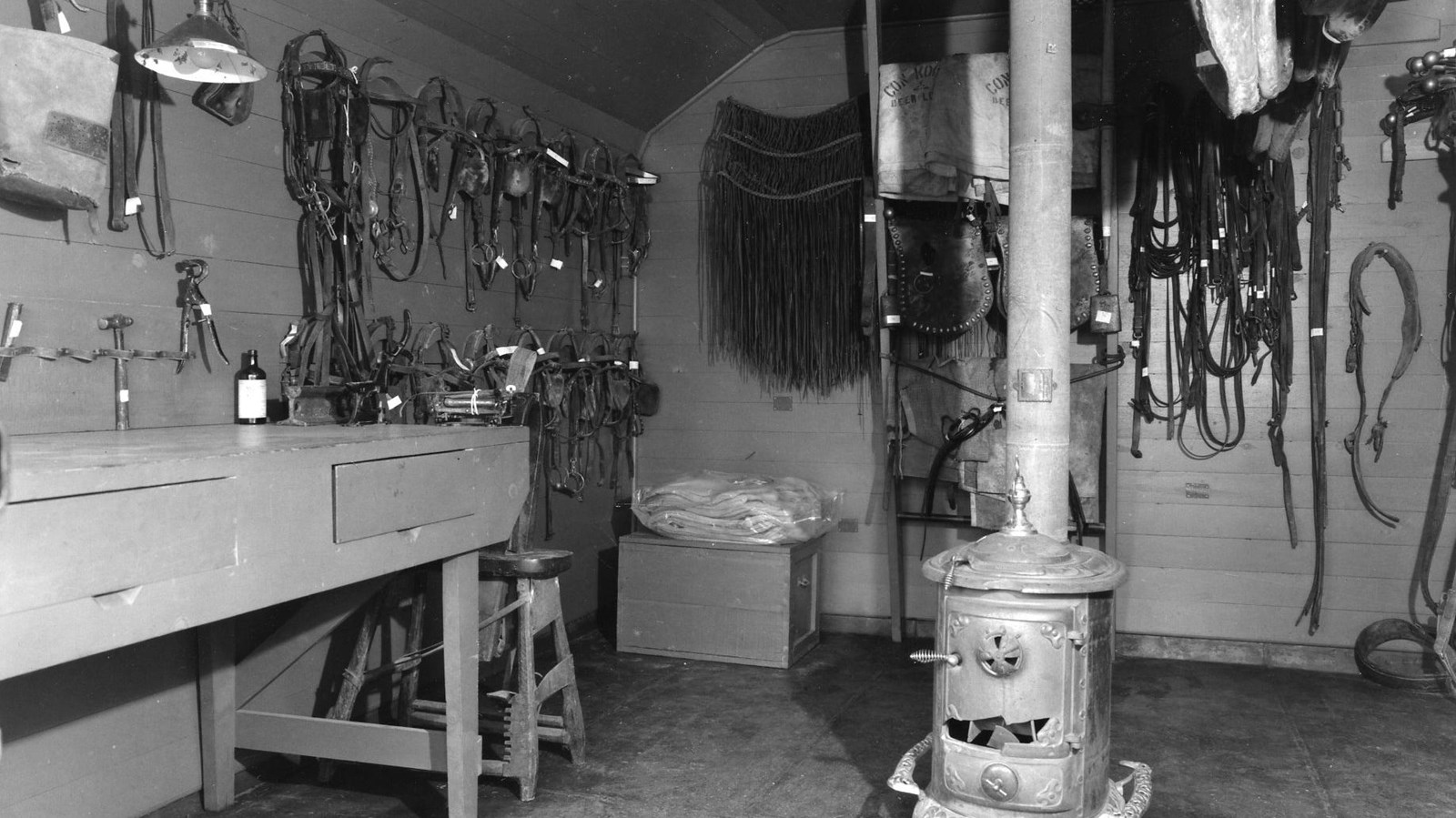Last updated: April 5, 2024
Place
Ice House & Tack Room

NPS/Grant-Kohrs Ranch
Quick Facts
Location:
Grant Kohrs Ranch
Significance:
Historical Building
Designation:
National Historic Site
Amenities
3 listed
Cellular Signal, Historical/Interpretive Information/Exhibits, Trash/Litter Receptacles
This small log structure was originally constructed by Conrad Kohrs sometime around 1880, to store blocks of winter ice. At that time there were no refrigerators on the ranch and perishable food items such as meat and dairy products were kept from spoiling by being stored inside the basement below or inside of an ice filled cabinet located in the ranch house.
There were originally no windows in this room and the door was made of thick boards. The log walls acted like a natural insulator to keep the ice cold. Most winters the nearby Johnson Creek was turned into a pond and large blocks of ice were removed by hand or horse-drawn saws. Each block of ice weighed a few hundred pounds and several tons were stored in here each winter. The large blocks were then covered and surrounded by sawdust, which acted as an insulator between each layer and row.
Just like a modern insulated cooler today, the ice did melt, but very slowly. The floor was covered with an iron plating that was slightly higher in the front than the back. This kept melted water from soaking into the wood underneath and allowed the water to run down to an opening in the back of the building. The ice usually lasted through the summer heat until the late fall when freezing temperatures returned to area.
In the 1930’s Conrad Warren installed refrigeration in the ranch house and this building was converted into a tack room to repair and store the harnesses and other equipment needed to connect the teams of horses to wagons, buggies, and ranch machinery. Today visitors can view some of the ranch’s historic bridles, harnesses, saddles, driving lines, and other tools on display inside of this building.
There were originally no windows in this room and the door was made of thick boards. The log walls acted like a natural insulator to keep the ice cold. Most winters the nearby Johnson Creek was turned into a pond and large blocks of ice were removed by hand or horse-drawn saws. Each block of ice weighed a few hundred pounds and several tons were stored in here each winter. The large blocks were then covered and surrounded by sawdust, which acted as an insulator between each layer and row.
Just like a modern insulated cooler today, the ice did melt, but very slowly. The floor was covered with an iron plating that was slightly higher in the front than the back. This kept melted water from soaking into the wood underneath and allowed the water to run down to an opening in the back of the building. The ice usually lasted through the summer heat until the late fall when freezing temperatures returned to area.
In the 1930’s Conrad Warren installed refrigeration in the ranch house and this building was converted into a tack room to repair and store the harnesses and other equipment needed to connect the teams of horses to wagons, buggies, and ranch machinery. Today visitors can view some of the ranch’s historic bridles, harnesses, saddles, driving lines, and other tools on display inside of this building.
